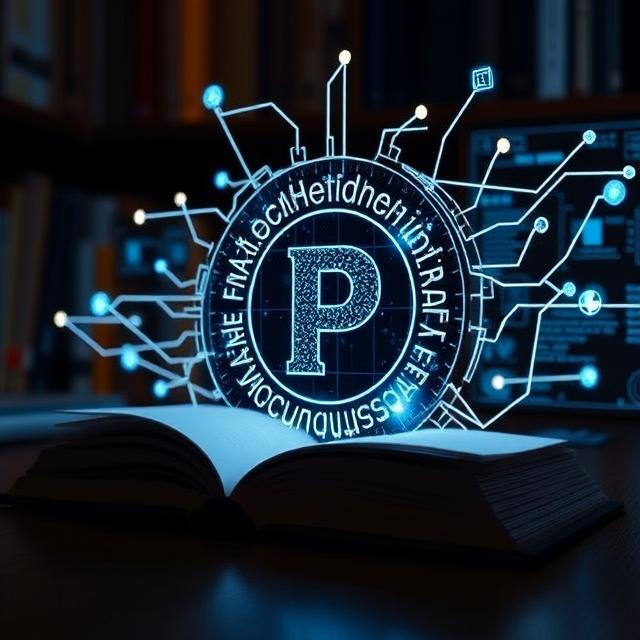Introduction
Intellectual property (IP) refers to the legal rights that protect creations of the mind, including inventions, literary and artistic works, designs, symbols, names, and images used in commerce. In today’s digital and knowledge-driven economy, intellectual property plays a vital role in protecting innovation and ensuring fair competition.
One of the most important aspects of intellectual property is copyright, which safeguards original works such as books, music, films, software, and artistic creations. Understanding copyright laws and strategies to protect intellectual property is essential for creators, businesses, and innovators.
This article explores the concept of intellectual property, different types of IP, the significance of copyright, legal protection methods, and best practices for ensuring copyright compliance.
1. What is Intellectual Property?
Intellectual property refers to intangible assets that arise from human creativity and innovation. Just like physical property, intellectual property can be owned, sold, licensed, or transferred. IP rights give creators and businesses the exclusive authority to use their creations for a specific period.
1.1. Importance of Intellectual Property
- Encourages innovation and creativity.
- Provides financial benefits to creators and businesses.
- Protects businesses from competitors copying their ideas.
- Strengthens economic growth through patents, trademarks, and copyrights.
- Ensures legal recognition of ownership.
1.2. Types of Intellectual Property
Intellectual property is classified into four main categories:
A. Copyright
- Protects original literary, artistic, musical, and software works.
- Prevents unauthorized copying, distribution, and modification.
- Lasts for the creator’s lifetime plus a certain number of years after death (varies by country).
B. Patents
- Grants exclusive rights to inventors for new products, processes, or improvements.
- Prevents others from making, using, or selling the invention for a fixed period (usually 20 years).
- Encourages technological advancements and research.
C. Trademarks
- Protects brand names, logos, slogans, and symbols that identify a business.
- Helps in distinguishing one company’s goods or services from competitors.
- Prevents unauthorized use of a brand’s identity.
D. Trade Secrets
- Protects confidential business information, such as formulas, designs, and strategies.
- No time limit on protection as long as secrecy is maintained.
- Coca-Cola’s secret formula is an example of a well-protected trade secret.
1.3. Intellectual Property Laws
Different countries have specific laws governing IP rights, but international agreements ensure global protection. Some key agreements include:
- Berne Convention (1886) – Protects literary and artistic works globally.
- Patent Cooperation Treaty (PCT, 1970) – Facilitates international patent applications.
- Madrid Protocol (1989) – Helps in international trademark registration.
- TRIPS Agreement (1994) – Sets global intellectual property standards.
2. Understanding Copyright
Copyright is a crucial part of intellectual property law that protects original works of authorship. It ensures that creators have control over their work and receive financial benefits from their creations.
2.1. What Does Copyright Protect?
Copyright applies to a wide range of creative works, including:
- Books, articles, and research papers
- Music compositions and recordings
- Films, documentaries, and scripts
- Paintings, photographs, and sculptures
- Software and computer programs
- Architectural designs
- Online content such as blogs, videos, and graphics
2.2. Duration of Copyright Protection
- For individuals: Copyright typically lasts for the lifetime of the creator plus 50 to 100 years (depending on the country).
- For corporations: Protection lasts 50 to 120 years from the date of creation.
- For public domain works: Once copyright expires, the work becomes freely available for public use.
2.3. Rights of Copyright Holders
Copyright provides the creator with exclusive rights, including:
- Reproduction Rights: The right to copy or reproduce the work.
- Distribution Rights: The right to sell or distribute copies.
- Public Performance Rights: The right to present the work in public (e.g., movies, music).
- Derivative Work Rights: The right to modify or adapt the work.
- Moral Rights: The right to claim authorship and prevent distortion of the work.
2.4. How to Obtain Copyright Protection
- Automatic Protection: Copyright is granted automatically when a work is created and fixed in a tangible form.
- Formal Registration: Although not required, registering copyright with a legal authority provides additional legal protection.
- Use of Copyright Notices: Adding a copyright symbol (©) with the creator’s name and year of creation strengthens claims of ownership.
3. How to Protect Copyright and Intellectual Property
To safeguard intellectual property from infringement, creators and businesses should adopt best practices and legal measures.
3.1. Legal Protection Strategies
- Register Copyright, Trademarks, and Patents: Formal registration enhances legal enforcement.
- Use Digital Rights Management (DRM): Prevents unauthorized copying of digital content.
- Monitor and Enforce Rights: Regularly check for infringements and take legal action when necessary.
- Sign Licensing Agreements: Allow others to use IP under specific conditions.
- Include Watermarks on Digital Content: Protects photographs, artworks, and documents from theft.
3.2. Preventing Copyright Infringement
To avoid violating others’ copyright, individuals and businesses should:
- Use royalty-free or licensed content for commercial purposes.
- Give proper credit when using someone else’s work.
- Obtain written permission before using copyrighted material.
- Understand fair use policies to determine when limited use is allowed.
3.3. Consequences of Copyright Violation
Unauthorized use of copyrighted material can lead to serious consequences:
- Legal Penalties: Fines and imprisonment for copyright infringement.
- Financial Losses: Payment of damages and compensation to the copyright holder.
- Business Reputation Damage: Legal disputes can harm a company’s credibility.
4. The Role of Intellectual Property in Economic Growth
Intellectual property plays a vital role in national and global economies by driving innovation, encouraging investment, and creating jobs.
4.1. Encouraging Innovation and Research
- Strong IP protection motivates individuals and companies to invest in research and development (R&D).
- Ensures innovators are rewarded for their efforts.
4.2. Boosting Entrepreneurship and Business Growth
- Startups and businesses can commercialize their intellectual property through licensing and franchising.
- Patents and trademarks increase a company’s market value and competitive advantage.
4.3. Enhancing International Trade
- Intellectual property laws facilitate cross-border trade of innovative products.
- Countries with strong IP laws attract foreign investment.
4.4. Reducing Counterfeiting and Piracy
- Protecting trademarks and patents helps reduce fake products and ensures consumer safety.
- Governments can generate revenue by enforcing IP regulations and collecting licensing fees.
5. Conclusion
Intellectual property is a crucial asset that fosters creativity, innovation, and economic development. Copyright, as a key component of IP, ensures that creators have control over their work and benefit from their efforts.
By understanding copyright laws and adopting proper protection measures, individuals and businesses can safeguard their intellectual assets and avoid legal complications. Governments, legal institutions, and organizations must work together to strengthen IP protection, promote innovation, and create a fair economic environment.
In an increasingly digital world, intellectual property rights will continue to play a significant role in shaping the future of technology, media, and commerce.




